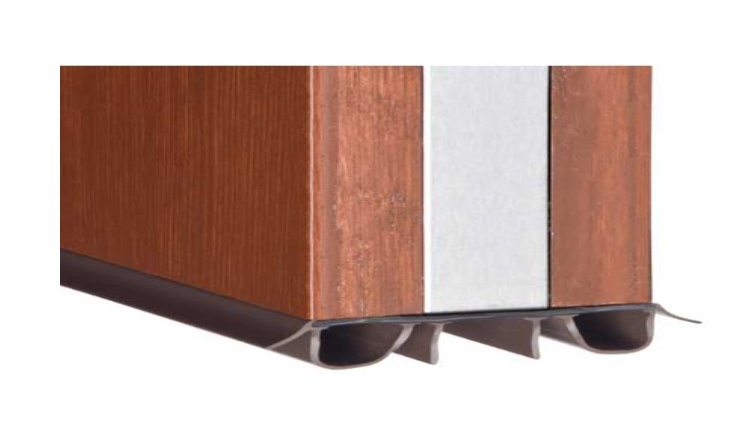Types of Door Bottom Seals
Doors, whether interior or exterior, are necessary components of any home. They provide protection from the elements, keep pests and intruders out, and help regulate indoor climate. Unfortunately, many doors are not properly sealed at the bottom due to improper installation or wear-and-tear over time. This can cause drafts and air leaks that make your home uncomfortable and less energy efficient. The good news is that there are a variety of door bottom seals available to help you better insulate your home against these types of problems.
The most common type of door bottom seal is a threshold seal which is installed between the door frame and flooring material. Threshold seals come in many different sizes so they can be customised for your specific needs as well as adjustable for different heights of flooring materials such as tile or wood floors. Threshold seals also come with a protective vinyl cover which helps protect them from wear-and-tear over time while still allowing for an effective seal between the floor and door frame.
Another popular type of door bottom seal is a sweep strip which seals along the entire length of the bottom edge of your door when it closes shut against it. These sweep strips can be made from either rubber or vinyl depending on how much protection you need.
Function of Door Bottom Seals
Do you have a draughty door in your home? Door bottom seals are a great way to insulate your door and keep the cold air out. This article will discuss the function of door bottom seals and how they can help improve the energy efficiency of your home.
Door bottom seals are an important part of any energy-efficient home. They work by creating an airtight seal around the perimeter of a door, preventing drafts from entering or leaving through gaps in the frame. The most common type of door bottom seal is made from flexible materials such as silicone, vinyl, or rubber that compress against the floor when closed. They come in various shapes and sizes to fit doors with different frames and thresholds.
In addition to providing insulation against drafts, door bottom seals also reduce noise pollution by blocking sound waves from passing through gaps along the frame. This can be especially useful for households that have pets or children who play loudly indoors. It also helps keep outside noise such as traffic or barking dogs away from inside living spaces for improved peace and quiet.
Door bottom seals can be installed easily on most residential doors without needing any special tools or skill sets aside from basic DIY knowledge. If necessary, they can also be removed just as easily if needed for cleaning.
Benefits of Installing a Door Bottom Seal
Installing a door bottom seals is an effective way to save energy, reduce noise levels, and keep out pests such as rodents and insects. Not only that, but it can also improve the overall look of a home or business by providing it with an aesthetically pleasing finish. In this article, we will discuss the many benefits of installing a door bottom seal.
First and foremost, installing a door bottom seal helps to reduce energy costs. By sealing the gap between the floor and the door frame, it prevents warm air from escaping during winter months, leading to lower heating bills. Additionally, during summer months it helps keep cool air inside – reducing cooling costs as well.
Reducing noise levels is another benefit provided by installing a door bottom seal. The flexible material used in these seals easily absorbs sound waves before they have time to travel through your walls or windows into other rooms or living areas – cutting down on unwanted noise pollution in your home or business space.
Finally, installing a door bottom seal can help protect you from pests such as rodents and insects which may be trying to gain access into your property via small gaps around doors and window sills.
Installation Instructions for a Door Bottom Seal
Installing a door bottom seals is an important step in ensuring that your home is airtight and energy efficient. Doing the job yourself can save you both time and money, but it’s important to follow the instructions carefully so that it is done correctly.
Before you start, make sure you have all of your supplies on hand – a door bottom seal, screws or adhesive tape (depending on what type of seal you’re using), a drill or screwdriver, and any necessary tools. You may also need to purchase weather stripping material if needed.
To begin the installation process, start by closing the door before installing the bottom seal strip. This will ensure that it fits snugly against the door frame when finished. Then use either screws or adhesive tape (depending on which type of seal you have) to secure one end of the strip to the inside edge of your door frame at its lowest point. Make sure it’s tightly secured in place before continuing with the installation process as any gaps will compromise its effectiveness.
Next measure out where each additional piece needs to go along your doors threshold according to manufacturer’s instructions and mark off these areas with a pencil or similar tool for reference later on during the installation process.

Conclusion
In conclusion, door bottom seals are an important part of any home or business. They help keep out drafts, dust and other debris while also reducing energy costs. Door bottom seals come in a variety of styles to fit almost any door size and installation is relatively easy. With proper maintenance and cleaning, you can expect many years of reliable use from your door bottom seal.

